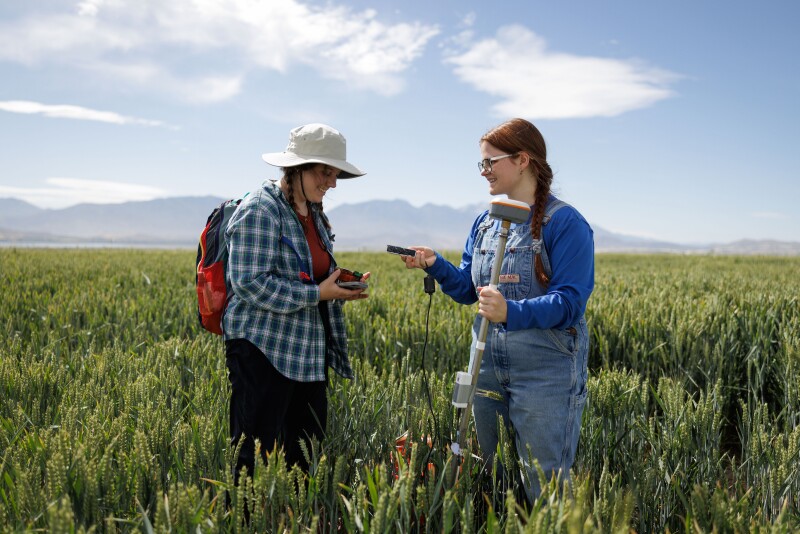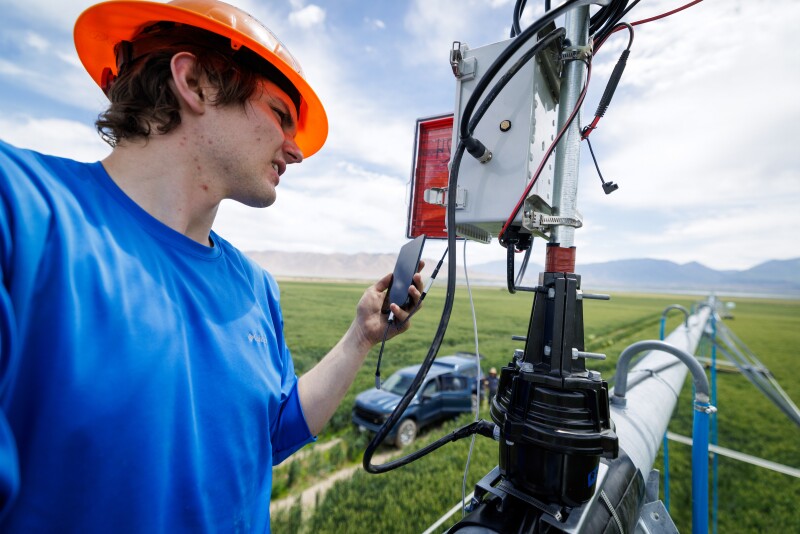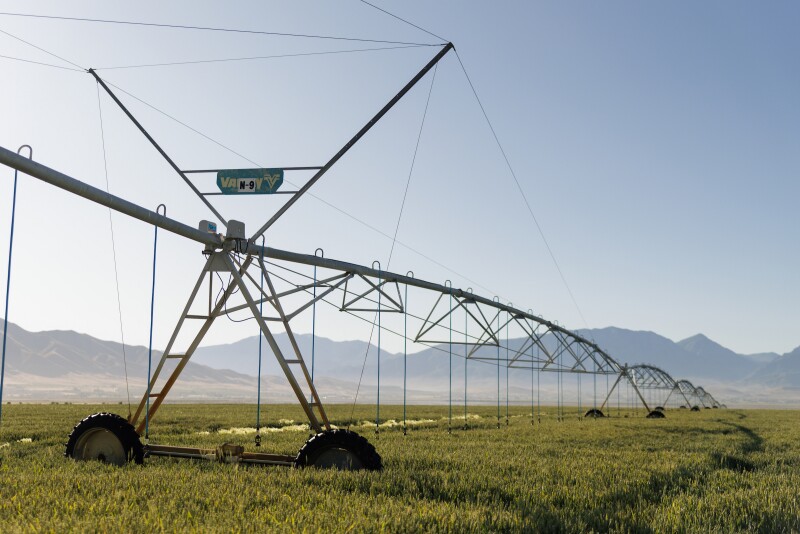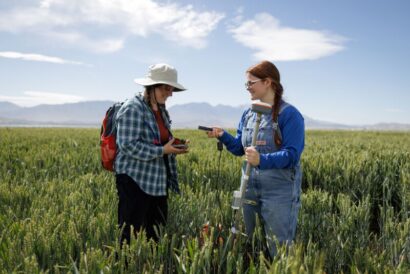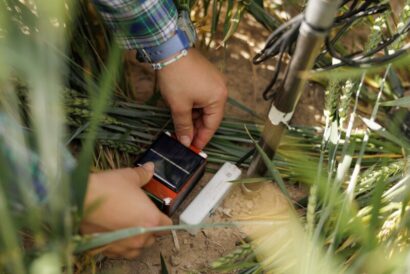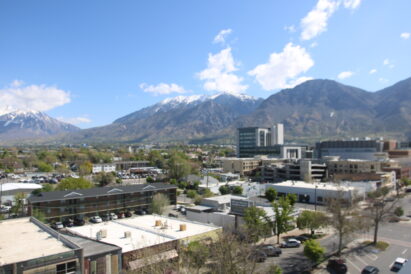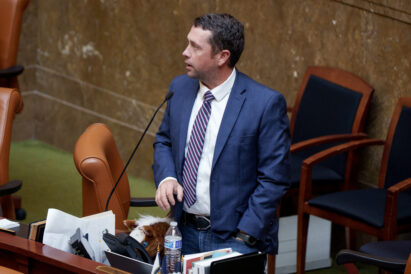Optimizing water use: BYU researchers create Bluetooth sensors that track field water levels
- BYU Smart Bluetooth Stakes are placed at an Elberta wheat field to measure water levels.
- BYU Smart Bluetooth Stakes are placed at an Elberta wheat field to measure water levels.
- BYU Smart Bluetooth Stakes are placed at an Elberta wheat field to measure water levels.
- BYU Smart Bluetooth Stakes are placed at an Elberta wheat field to measure water levels.
In the western United States, where water is at a premium, it is important for farmers to be efficient with their irrigation use.
Yet most farmers prescribe the same amount of water to every part of their field, leading to some soil getting too much water and other soil too little, according to Brigham Young University electrical engineering professor Brian Mazzeo.
Seeking a new way to optimize irrigation, a group of BYU researchers developed low-cost Bluetooth devices powered by solar panels — called BYU Smart Bluetooth Stakes — and placed 86 of them in a wheat field in Elberta to chart the moisture level of the entire 124-acre plot.
“It’s addressing the gap between our ability to put nutrients and water in places, and the lack of information that we have about the spatial distribution of it,” Mazzeo said. “We’re pushing the frontiers of what’s actually possible to be done.”
The strategy allowed researchers to collect enough data to build a moisture map of the field over the course of an irrigation cycle, where they could see the different irrigation patterns.
“Just the fact that we started to see those patterns was amazing to us,” Mazzeo said. “And we plan on putting a lot of sensors out into fields this next year with some improve designs.”
The team of BYU students and professors included Mazzeo and Ph.D. student Sauel Crave, along with geography professor Ruth Kerry and wildlife sciences professor Neil Hansen. Kerry and Hansen study agriculture and recognized with the right data you could save 20% or more water and get the same yield.
“Their research had already shown some of these things and how invaluable this was,” Mazzeo said. “And then with them and their teams, it was trying to figure out how can we create a solution that could actually be something viable?”
A key challenge was creating sensors that would be low enough not to be destroyed during the harvest and cheap enough that you can put out several of them.
Inside the devices are Bluetooth microchips, thin solar panels and probes to measure soil moisture. They are also built to be waterproof and durable. When the researchers collected the sensors after the study, all 86 of them were still intact, according to Mazzeo.
“There’s a lot of clever engineering to make this type of thing work,” he said.
While Mazzeo believes the product has commercial potential, he said a lot more research is required first to answer some of the outstanding questions.
“How much water can be saved?,” he said. “How many sensors do you need? What makes the system reliable to do this?”

